littlemisterbig
Well-Known Member
- Joined
- Jun 28, 2014
- Messages
- 346
- Reaction score
- 0
I've not been on the forums for a good while, so I figured I would start documenting this build I'm working on. I appreciate any feedback 
Abstract:
Over my winter break, I had some spare time to kill, so I thought it would be good fun to have another go at high performance rocketry. Also, I figured it would be good to get some practice with high altitude/velocity flights before even thinking about building some of the larger and faster rockets I have planned for this year. As per usual, I wanted to keep things I have to order online at a minimum - to the scrap bin I went. I ended up finding some FWFG tubing, which I had bought from Rob and Gloria of AMW at LDRS 34. I also had a pair of injection-molded 38mm nosecones, and a one square foot piece of 1/8" G10 fiberglass. Seizing this opportunity, I started throwing some designs together in OpenRocket, and pretty quickly settled on a design which would be able to fly the whole range of CTi 5 grain motors, while staying under the 10K AGL waiver of my home field with smaller motors.
Airframe:
The airframe is nothing special, just 22 inches of thick wall FWFG tubing. I don't have any concerns regarding it's structural integrity or ability to hold up above M2, as many people have flown COTS fiberglass tubes above M3 with no issues. I have already sanded the last few inches of the tube, where the fins will be adhered, and as a result of this, that section of the tube is slightly thinner than the rest. I'm not too concerned about this though, as it's only about a thousandth or two of difference.
Fins:
The fins were cut out of the 1/8" plate of G10 FG I mentioned earlier. They are currently at my school where I am working on squaring up all the edges on the belt sander and Bridgeport, as well as beveling the leading edges. I have not yet run simulations to determine flutter and divergence velocities, however, I suspect both are well above the velocities we can expect from the motors I'll be putting in this. The fins were also designed specifically to be less vulnerable to flutter, by having no trailing edge overhang, a relatively small span (while retaining stability), and using excessively thick fin stock.
Recovery:
Since the rocket will weigh just over 18 ounces empty, I figure I can go pretty light in the recovery department. Originally, I was considering a large streamer, as it would be very space efficient, and require only one deployment event to have it recover as intended. However, I'm uncertain that it would give me a safe descent rate, so I might try to fit a Top Flight thin-mil chute with a cable cutter in this rocket. Deployment will be handled by either a Stratologger SL100 or Eggtimer Quark. I'm much more experienced with the Stratologger, so I'm leaning towards that. I plan on using a ComSpec RDF transmitter for tracking.
Here are all the parts I have so far, laid out.
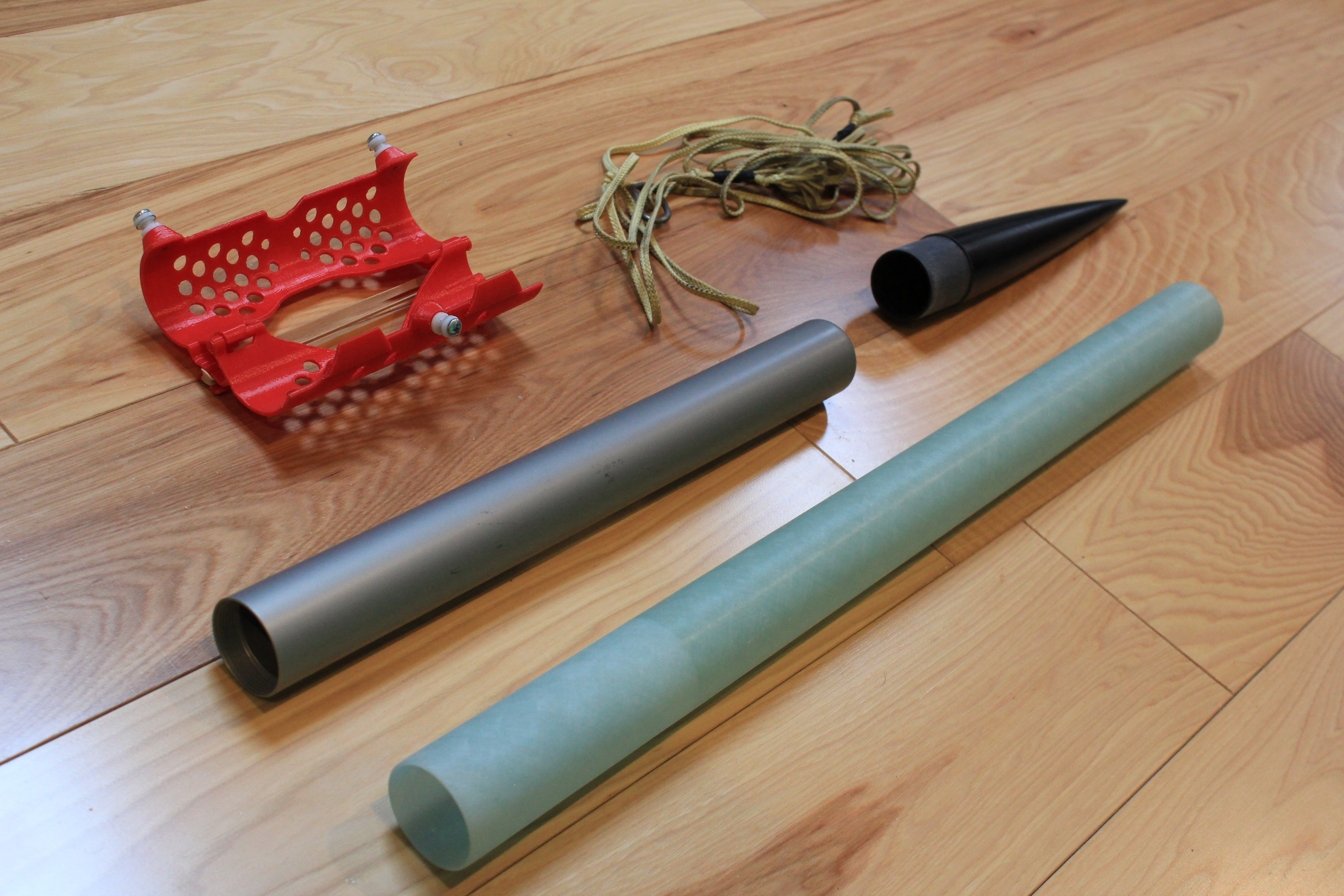
Since the nosecone is designed for thin wall tubes, I had to do a bit of sanding to get the shoulder to fit in the airframe tube properly.
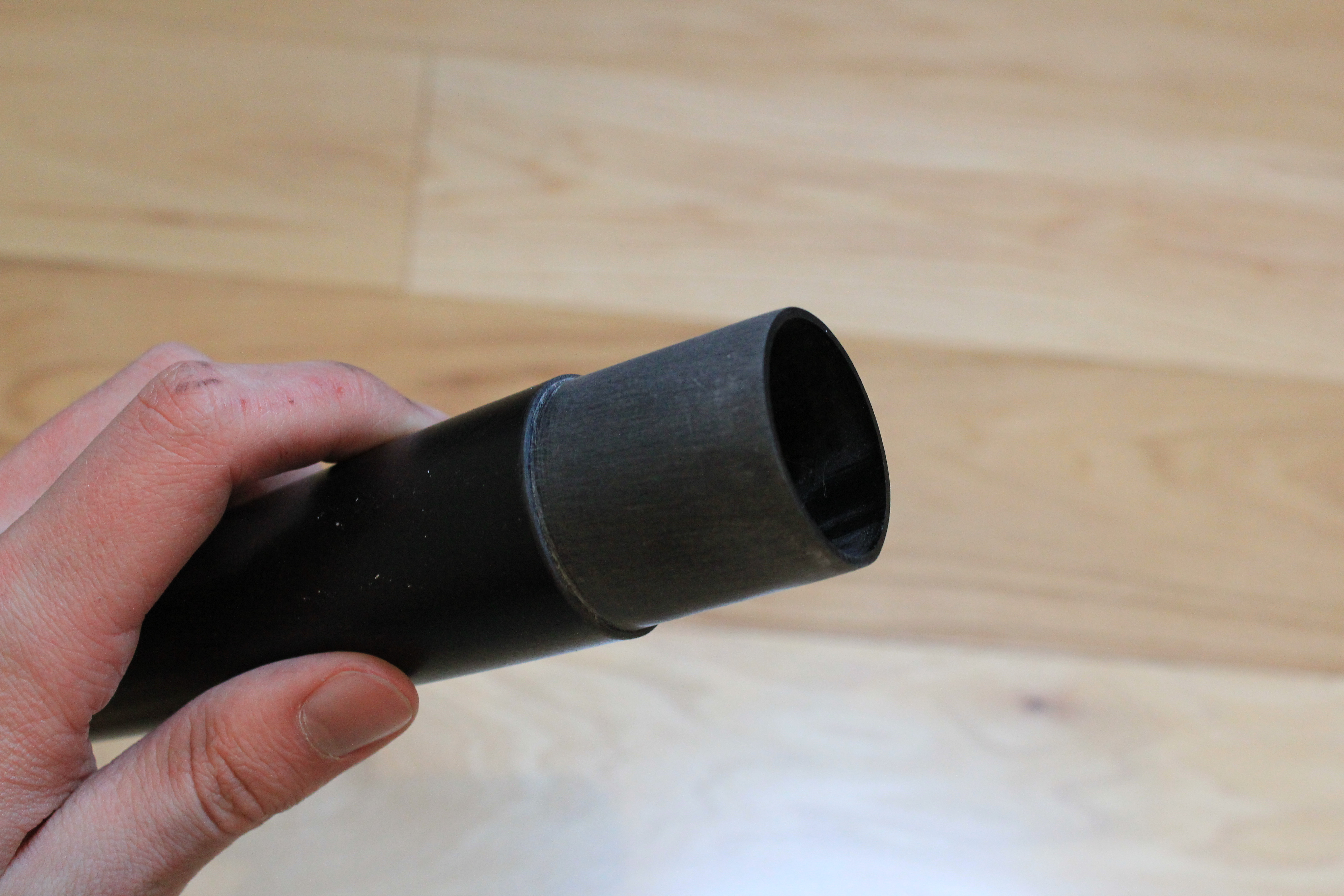
I sanded the end of the tube which the fins will be mounted on with 120 and 80 grit sandpaper. This did make it ever so thinner than the rest of the tube, but only by about 1-2 thousandths of an inch.
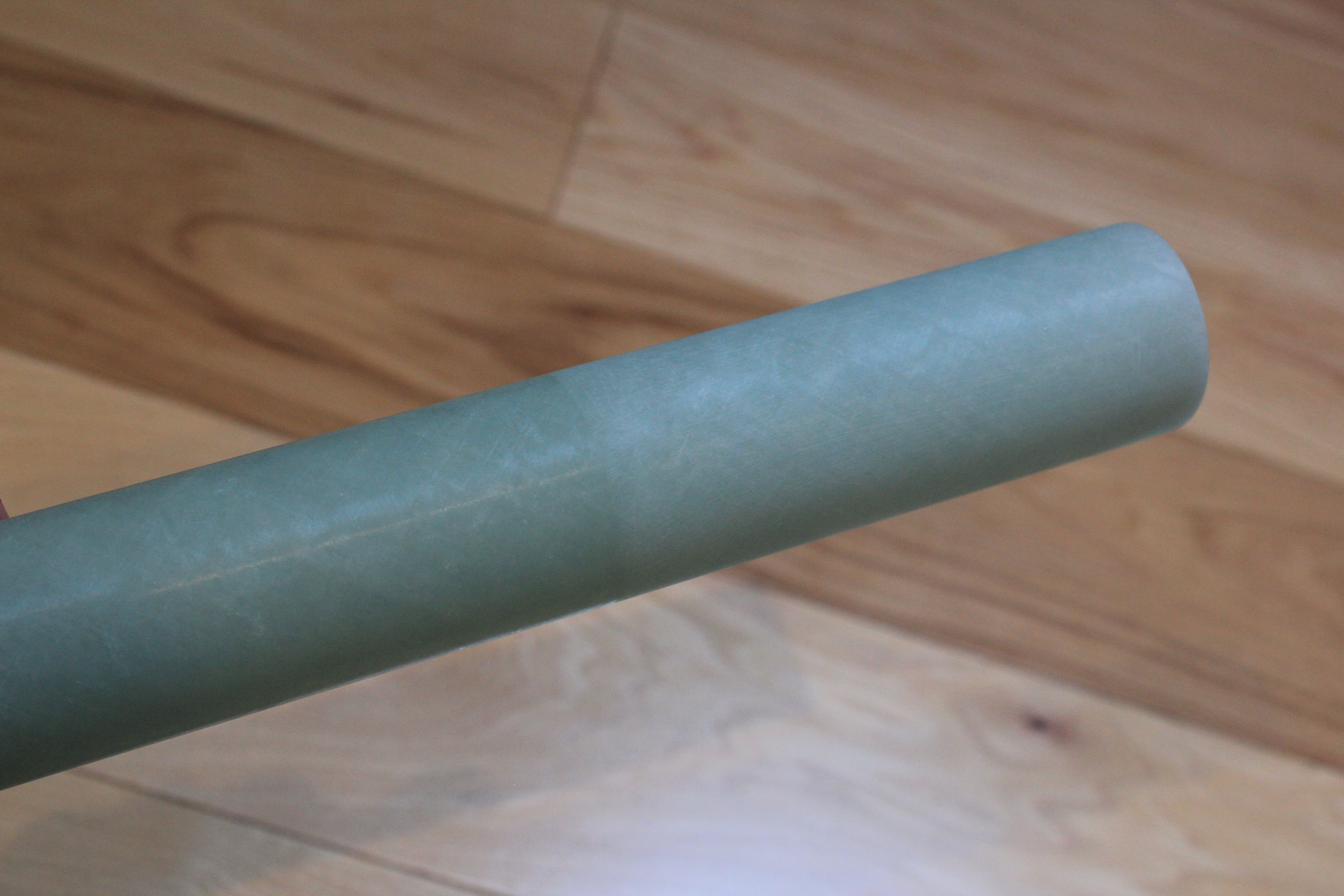
Not many people at my field fly high performance projects, I don't know anyone who could let me use their tower, so I figured I could use some of wfcook's awesome fly-away rail guides. I've used these on other high-G flights, as have many others, so I don't foresee it having any issues.
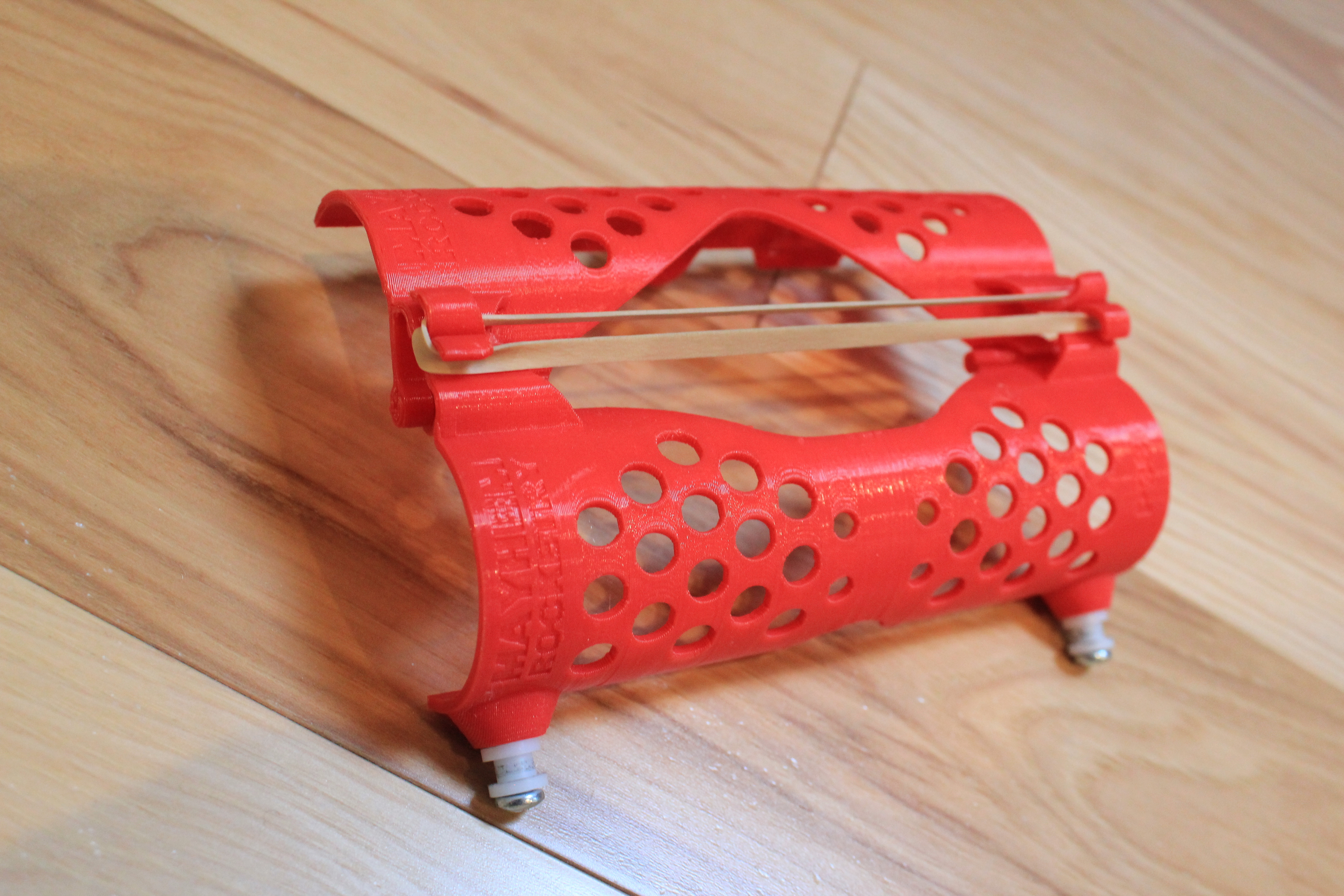
The epoxy I'll be using for this project is Loctite EA E-120HP, which I've heard nothing but good things about.
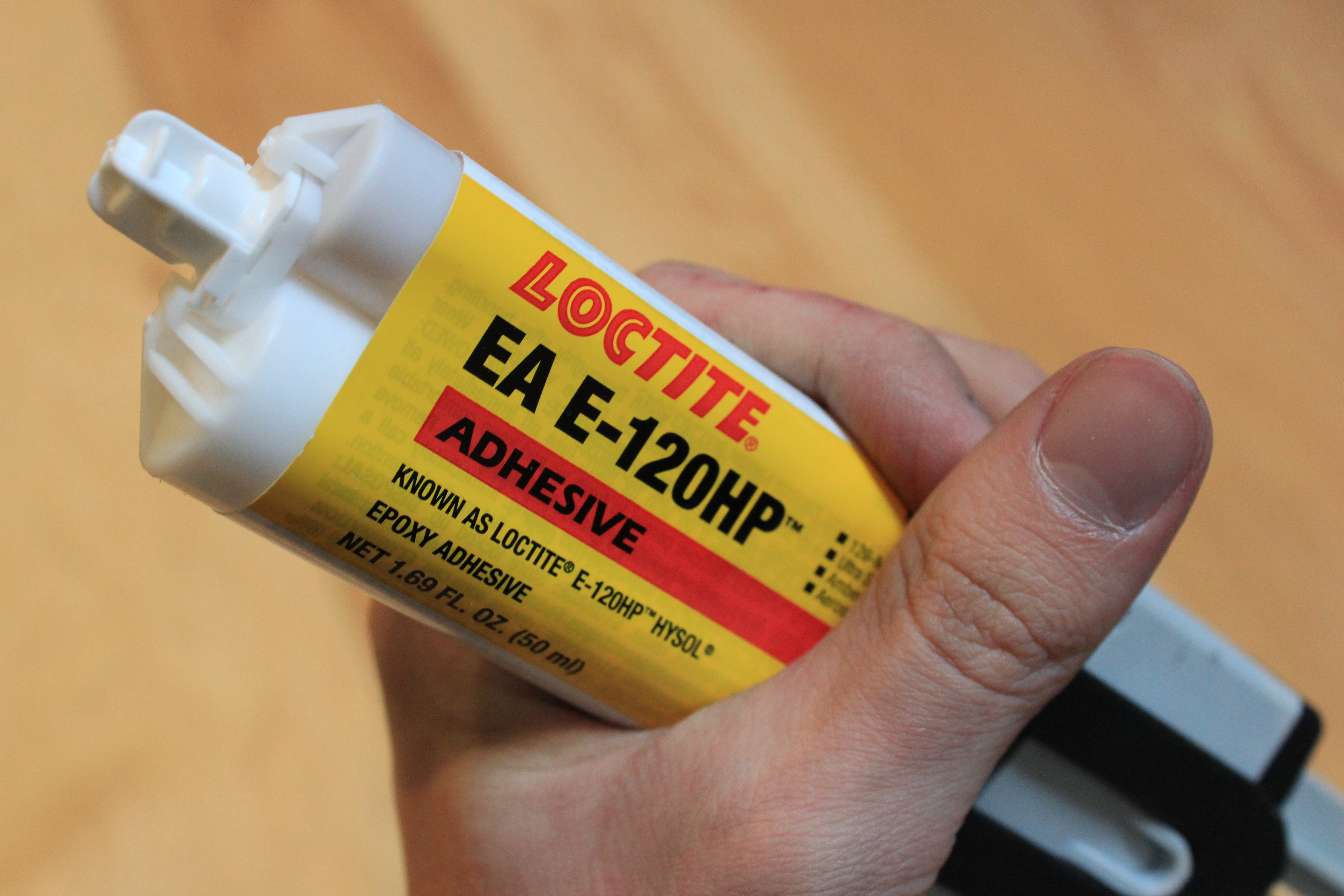
Since I'm not very familiar with this epoxy system, I decided to do a test piece to get a feel for it, so I can know what to anticipate when working on the final rocket. I figure it's better to mess up now, and see it coming when working on the final rocket.
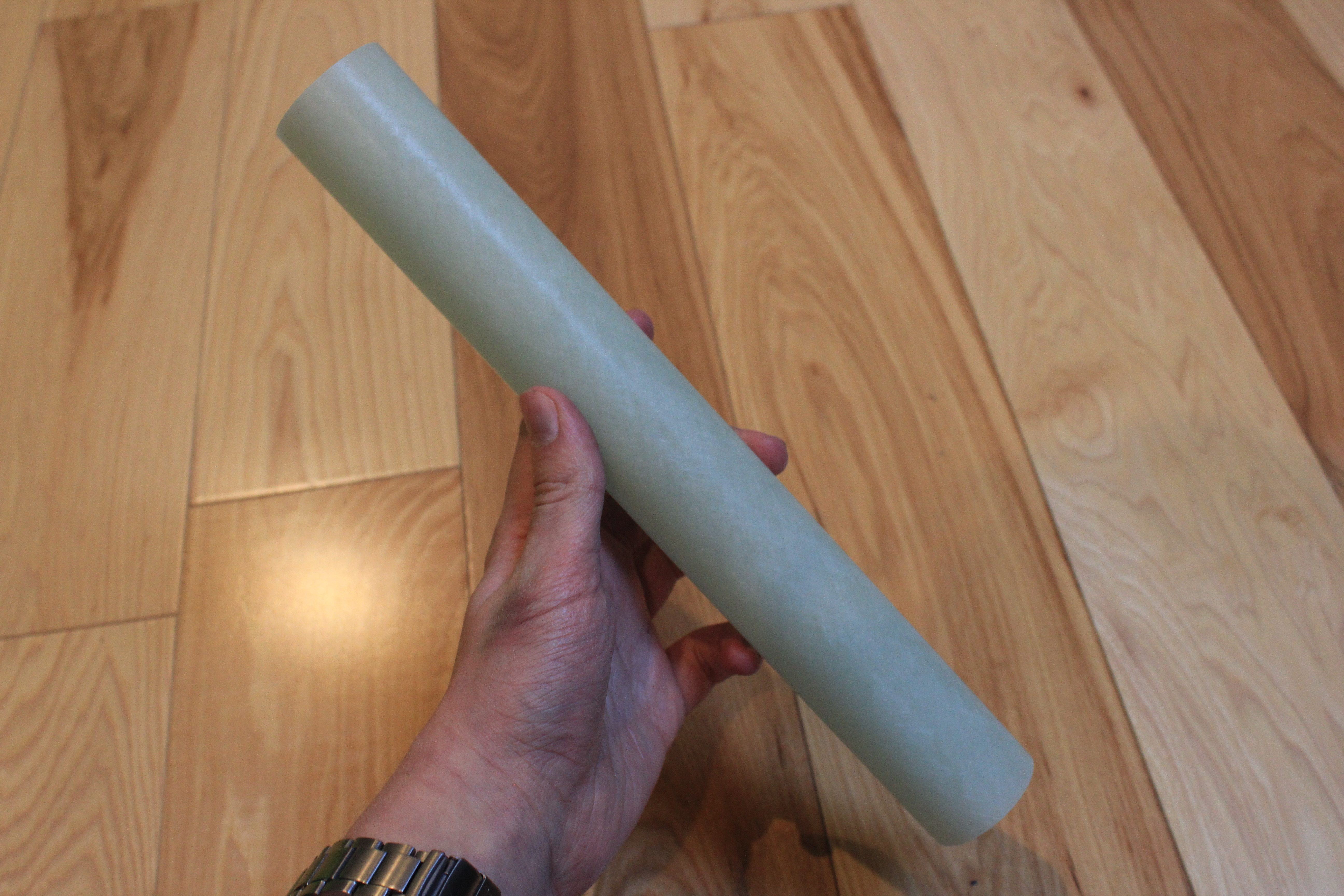
The fins were roughly cut out of the sheet with a reciprocating saw with a ferrous metals blade. Seemed to work rather well, and I was amazed how straight and precise I could get my cuts after a few fins.
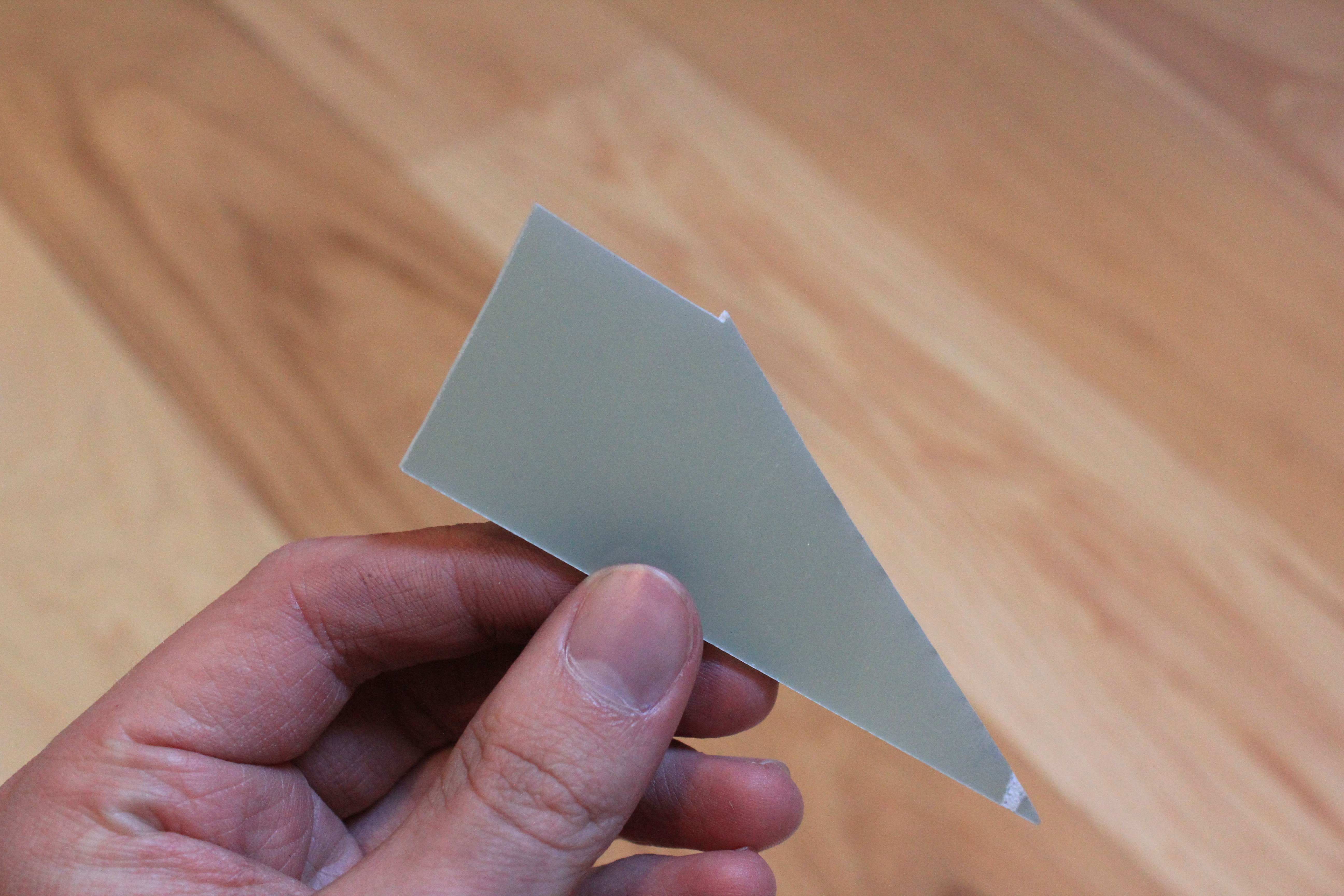
Here's the tube cut down to length, and the fin squared up. Both have been sanded with 80-grit sandpaper to improve adhesion. Prior to bonding, I also cleaned the tube and fin with 91% Isopropyl alcohol, and a lint-free paper towel. (all while wearing latex gloves to avoid getting the oil and dirt on my hands onto the pieces to be bonded)
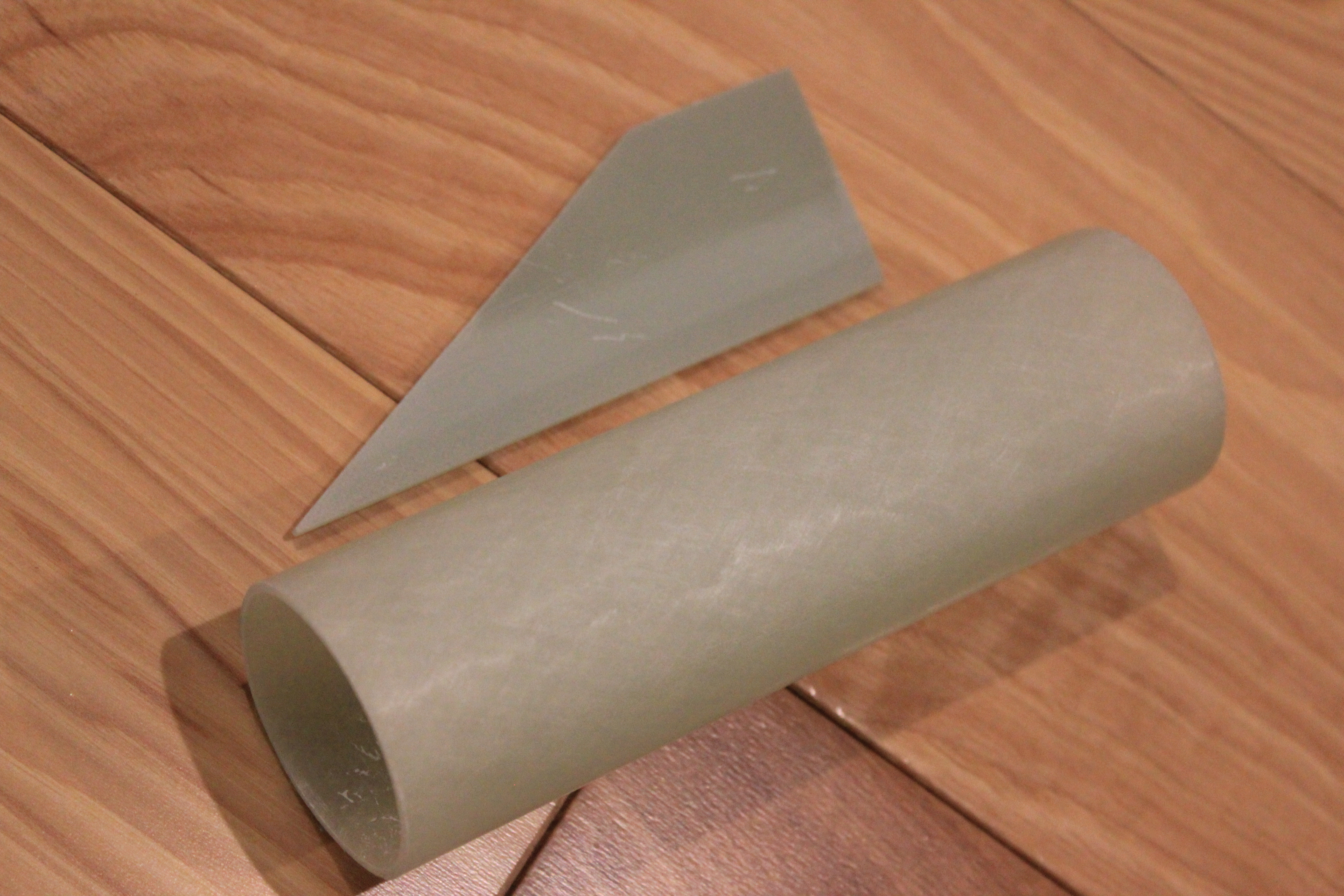
Here's the fin just after being bonded to the tube. I printed out a fin alignment guide from payloadbay.com and cut it out of foamcore. After putting the fin onto the tube, I slid the guide onto the tube, and over the fin. Once I got it lined up in the guide, and perpendicular to the tube, I put two pieces of masking tape on the front and back of the fin to provide some compressive force, which the alignment guide doesn't offer.
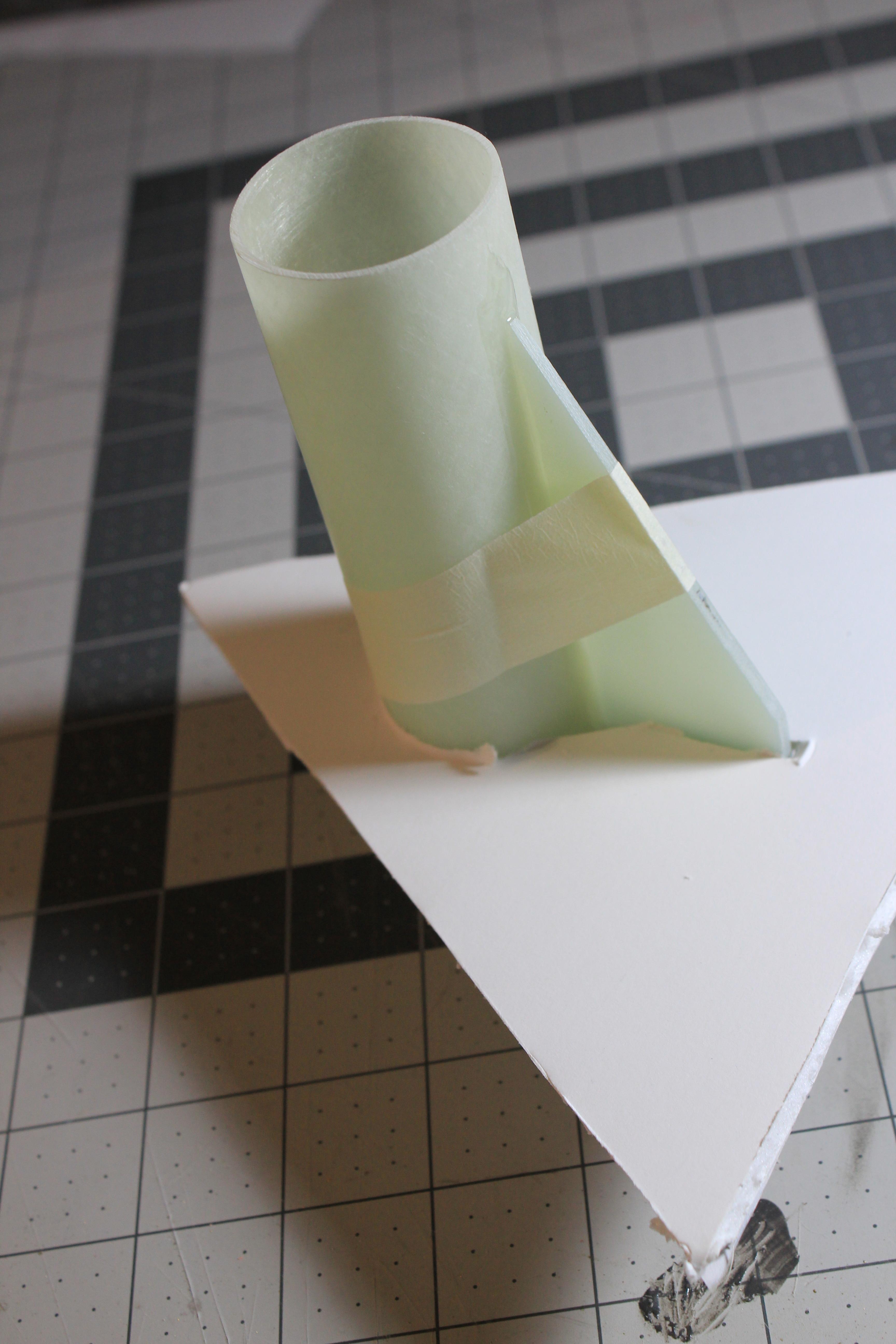
The epoxy should have cured by tonight, and hopefully I can get fillets on sometime Sunday.
That's all for now, folks.
Abstract:
Over my winter break, I had some spare time to kill, so I thought it would be good fun to have another go at high performance rocketry. Also, I figured it would be good to get some practice with high altitude/velocity flights before even thinking about building some of the larger and faster rockets I have planned for this year. As per usual, I wanted to keep things I have to order online at a minimum - to the scrap bin I went. I ended up finding some FWFG tubing, which I had bought from Rob and Gloria of AMW at LDRS 34. I also had a pair of injection-molded 38mm nosecones, and a one square foot piece of 1/8" G10 fiberglass. Seizing this opportunity, I started throwing some designs together in OpenRocket, and pretty quickly settled on a design which would be able to fly the whole range of CTi 5 grain motors, while staying under the 10K AGL waiver of my home field with smaller motors.
Airframe:
The airframe is nothing special, just 22 inches of thick wall FWFG tubing. I don't have any concerns regarding it's structural integrity or ability to hold up above M2, as many people have flown COTS fiberglass tubes above M3 with no issues. I have already sanded the last few inches of the tube, where the fins will be adhered, and as a result of this, that section of the tube is slightly thinner than the rest. I'm not too concerned about this though, as it's only about a thousandth or two of difference.
Fins:
The fins were cut out of the 1/8" plate of G10 FG I mentioned earlier. They are currently at my school where I am working on squaring up all the edges on the belt sander and Bridgeport, as well as beveling the leading edges. I have not yet run simulations to determine flutter and divergence velocities, however, I suspect both are well above the velocities we can expect from the motors I'll be putting in this. The fins were also designed specifically to be less vulnerable to flutter, by having no trailing edge overhang, a relatively small span (while retaining stability), and using excessively thick fin stock.
Recovery:
Since the rocket will weigh just over 18 ounces empty, I figure I can go pretty light in the recovery department. Originally, I was considering a large streamer, as it would be very space efficient, and require only one deployment event to have it recover as intended. However, I'm uncertain that it would give me a safe descent rate, so I might try to fit a Top Flight thin-mil chute with a cable cutter in this rocket. Deployment will be handled by either a Stratologger SL100 or Eggtimer Quark. I'm much more experienced with the Stratologger, so I'm leaning towards that. I plan on using a ComSpec RDF transmitter for tracking.
Here are all the parts I have so far, laid out.

Since the nosecone is designed for thin wall tubes, I had to do a bit of sanding to get the shoulder to fit in the airframe tube properly.

I sanded the end of the tube which the fins will be mounted on with 120 and 80 grit sandpaper. This did make it ever so thinner than the rest of the tube, but only by about 1-2 thousandths of an inch.

Not many people at my field fly high performance projects, I don't know anyone who could let me use their tower, so I figured I could use some of wfcook's awesome fly-away rail guides. I've used these on other high-G flights, as have many others, so I don't foresee it having any issues.

The epoxy I'll be using for this project is Loctite EA E-120HP, which I've heard nothing but good things about.

Since I'm not very familiar with this epoxy system, I decided to do a test piece to get a feel for it, so I can know what to anticipate when working on the final rocket. I figure it's better to mess up now, and see it coming when working on the final rocket.

The fins were roughly cut out of the sheet with a reciprocating saw with a ferrous metals blade. Seemed to work rather well, and I was amazed how straight and precise I could get my cuts after a few fins.

Here's the tube cut down to length, and the fin squared up. Both have been sanded with 80-grit sandpaper to improve adhesion. Prior to bonding, I also cleaned the tube and fin with 91% Isopropyl alcohol, and a lint-free paper towel. (all while wearing latex gloves to avoid getting the oil and dirt on my hands onto the pieces to be bonded)

Here's the fin just after being bonded to the tube. I printed out a fin alignment guide from payloadbay.com and cut it out of foamcore. After putting the fin onto the tube, I slid the guide onto the tube, and over the fin. Once I got it lined up in the guide, and perpendicular to the tube, I put two pieces of masking tape on the front and back of the fin to provide some compressive force, which the alignment guide doesn't offer.

The epoxy should have cured by tonight, and hopefully I can get fillets on sometime Sunday.
That's all for now, folks.
Last edited:





